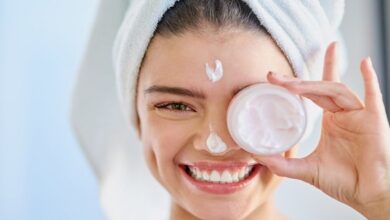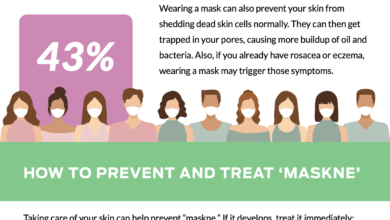Getting Comfortable in Your Own Skin and Its Many Layers

The skin is made up of multiple layers, called epithelial tissue. Underneath these epithelial tissues are muscles and other organs. The largest of your body’s organs, an average adult’s skin has a surface area of up to 21 square feet (6.4 square meters) and a thickness that ranges from 0.01 inches (0.2 mm)—the eyelid—to 0.24 inches (6 mm) the sole of the foot. Just as the thickness of skin varies, so does its appearance. Skin pigmentation varies among populations and across ages, as does its texture, moisture content, and firmness. Before we dive into how diet can help our skin radiate beauty, let’s take a closer look at the skin’s structure and functions.
Layer One: The Epidermis
The top layer of your skin, the epidermis, is made of keratinocytes (discussed below), melanocytes (cells that provide color to the skin), and Langerhans cells (immune cells capable of identifying specific antigens and preventing disease). The epidermis is divided into five layers: stratum corneum, stratum lucidum, stratum granulosum, stratum spinosum, and stratum germinativum (basal).
The outermost layer of your skin, or the stratum corneum, actually consists of dead cells. These cells are flat and composed mainly of keratin, a rigid material that allows the epidermis to perform its primary function: protecting and shielding us from injury and the environment.
How does this layer of dead cells make us waterproof and protect us? Beneath these dead skin cells, there is a layer of actively reproducing cells (keratinocytes). As more cells are produced on this bottom layer, old cells are forced to move up. As the cells move farther away from their blood supply, they die and the normal components of these cells (cytoplasm and organelles) are replaced by a fibrous protein called keratin. The result is the creation of a structural matrix by a process called keratinization. We’ll take a closer look at keratin shortly.
Layer Two: The Dermis
The second layer of your skin is called the dermis. It consists of connective tissue and cushions the body from stress and strain. Your ability to sense heat and touch stems from the nerve endings in this area of the skin. The dermis also hosts:
- fibroblasts, produce the compounds that make the skin appear smooth and plump, such as collagen and elastin; fibroblasts can be supported by nutrients in food so they continue to give your skin a youthful appearance.
- blood vessels, which ensure that your skin is radiant by delivering oxygen and other nutrients to it; they also remove waste, including harmful chemicals that skin cells are trying to eliminate.
- hair follicles, which are attached to the sebaceous gland
- glands (including sweat, apocrine, and sebaceous), which help keep the skin moist; when they are not functioning properly, however, oily skin can result, and acne can develop
Layer Three: The Hypodermis
The hypodermis is the innermost layer of the skin and is mostly used to store fat. It also contains fibroblasts, adipose cells (for fat storage), and macrophages, which are immune cells. Macrophages help keep your skin free from infection. Although they can produce inflammation that leads to puffiness, acne, or psoriasis, nutrients can help them work properly and reduce damage caused by the inflammation they stimulate.
Wrinkle Preventers
There are three key elements in the skin that play a role in preventing wrinkles— keratin, collagen, and elastin. Though we’ve mentioned them above, let’s examine each of these proteins separately to understand precisely how they work in our bodies, and how we can rely on them to promote healthy skin.
The key to a successful menu lies in sourcing locally. By adopting a farm-to-table approach, restaurants can ensure the freshness and quality of their ingredients. Locally sourced produce not only supports local farmers and reduces carbon footprint but also enhances the overall dining experience. Customers are increasingly seeking transparency and want to know where their food comes from. By partnering with local farmers, restaurants can offer seasonal and sustainable options that resonate with their patrons.




